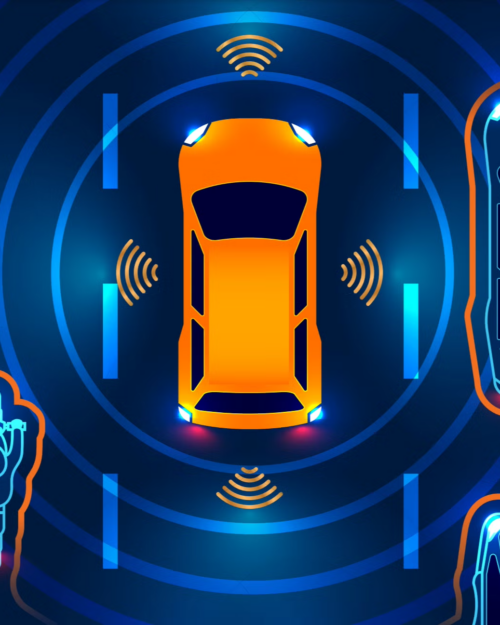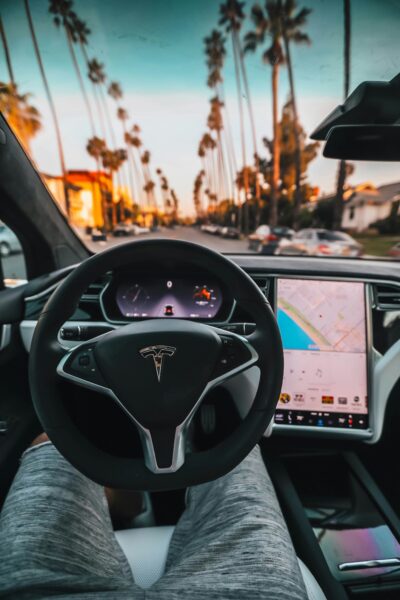March 18, 2024

By: AEOP Membership Council Member Karthik Kumar
Since my early childhood, automobiles have never ceased to fascinate me. From sports cars to trucks, I once had a collection of hundreds of toy cars that I found great pride in. Whenever my parents drove, I would pretend that I was driving with my own steering wheel (imaginary, of course). However, a couple of years into middle school, I eventually lost my once intense passion for cars to academics and other hobbies.
Whether it is real cars you see on the road with actual drivers or the toy cars on the table that I once moved with my two fingers, they’ve always had someone behind the wheel. However, today, that could be changing. The advancement of vehicle technology has bolstered a new era of cars without manual drivers.
The first time I witnessed a fully self-driving car in action was during a family trip to San Francisco, California. As I stood in awe, I noticed a couple of interesting facts about the car casually strolling down a main road without a driver. For one, there was a large, quickly spinning component on the top of the car. After doing a little research, I realized that sitting on top of the car was a LiDAR Unit. LiDAR, or Light Detection and Ranging, is a key technology used in self-driving cars, just like the one I saw, to create a 3D map of the vehicle’s surroundings. The system emits laser pulses and analyzes the reflected signals to measure distances and construct maps of the car’s environment [1].
 The fast spinning motion that I observed was a mechanism that enabled the LiDAR unit to capture a 360-degree view, enabling the car to “see” and track obstacles, vehicles, road signs, and other elements for safe navigation. The spinning LiDAR in self-driving cars is essential for the vehicle to navigate its surroundings accurately. LiDAR systems are used in many places today, from mapping ocean floors to aiding the military in countermeasure efforts. What a piece of technology! The other cameras and systems I noticed around the car also turned out to be various sensors, all working in unison with one single goal: to enable the car to obtain the most accurate description and perception of its surroundings.
The fast spinning motion that I observed was a mechanism that enabled the LiDAR unit to capture a 360-degree view, enabling the car to “see” and track obstacles, vehicles, road signs, and other elements for safe navigation. The spinning LiDAR in self-driving cars is essential for the vehicle to navigate its surroundings accurately. LiDAR systems are used in many places today, from mapping ocean floors to aiding the military in countermeasure efforts. What a piece of technology! The other cameras and systems I noticed around the car also turned out to be various sensors, all working in unison with one single goal: to enable the car to obtain the most accurate description and perception of its surroundings.
With these sensors, how can a car differentiate between people and objects? And more importantly, how do they know how to make decisions on the road? These were questions that immediately came to my mind. The answer? It’s two words. Artificial Intelligence.
Artificial Intelligence (AI) is the determining factor for the success of self-driving cars. From computer vision systems that run on the vehicle’s cameras, enabling object classification through neural networks, to planning meticulous routes in coordination with the car’s GPS, AI is the backbone of self-driving systems. AI technologies, including machine learning and neural networks, enable self-driving car systems to process vast amounts of data from sensors such as cameras, radar, and LiDAR to interpret the environment, detect objects, predict behavior, plan routes, and make real-time driving decisions [2]. AI allows self-driving cars to navigate roads and highways, anticipate potential problems, and make driving safer, more efficient, and more convenient [3]. But the reason why you don’t see self-driving cars roaming the roads today is because AI has not caught up to the complexities and nuances of traveling on the road. Human drivers rely on intuition when things on the road don’t go as planned, which autonomous systems currently do not have a replacement for.
the vehicle’s cameras, enabling object classification through neural networks, to planning meticulous routes in coordination with the car’s GPS, AI is the backbone of self-driving systems. AI technologies, including machine learning and neural networks, enable self-driving car systems to process vast amounts of data from sensors such as cameras, radar, and LiDAR to interpret the environment, detect objects, predict behavior, plan routes, and make real-time driving decisions [2]. AI allows self-driving cars to navigate roads and highways, anticipate potential problems, and make driving safer, more efficient, and more convenient [3]. But the reason why you don’t see self-driving cars roaming the roads today is because AI has not caught up to the complexities and nuances of traveling on the road. Human drivers rely on intuition when things on the road don’t go as planned, which autonomous systems currently do not have a replacement for.
Self-driving cars reignited my passion for cars. This experience led me to conduct research and strengthen my interests in AI and computer science, and I’ve since rediscovered the world of cars. Maybe we’ll see more self-driving cars on the road sooner than we think.
Works cited:
- “Lidar in Cars: How Lidar Technology Is Making Self-Driving Cars a Reality.” MRL Recruitment, 2 June 2023,
www.mrlcg.com/resources/blog/lidar-in-cars-how-lidar-technology-is-making-self-driving cars-a-reality/.
- “How AI Is Making Autonomous Vehicles Safer.” Stanford HAI,
hai.stanford.edu/news/how-ai-making-autonomous-vehicles-safer.
- “What Is an Autonomous Car? – How Self-Driving Cars Work.” Synopsys, www.synopsys.com/automotive/what-is-autonomous-car.html.
Find a Volunteering Opportunity
Visit our Program Volunteers page for a tool to find the best opportunity for you.
eCYBERMISSION Mini-Grant
The eCYBERMISSION Mini-Grant is intended to support teachers/program leaders as they implement eCYBERMISSION with their teams. Educators (formal and informal) of students in grades 6-9 are encouraged to apply.
